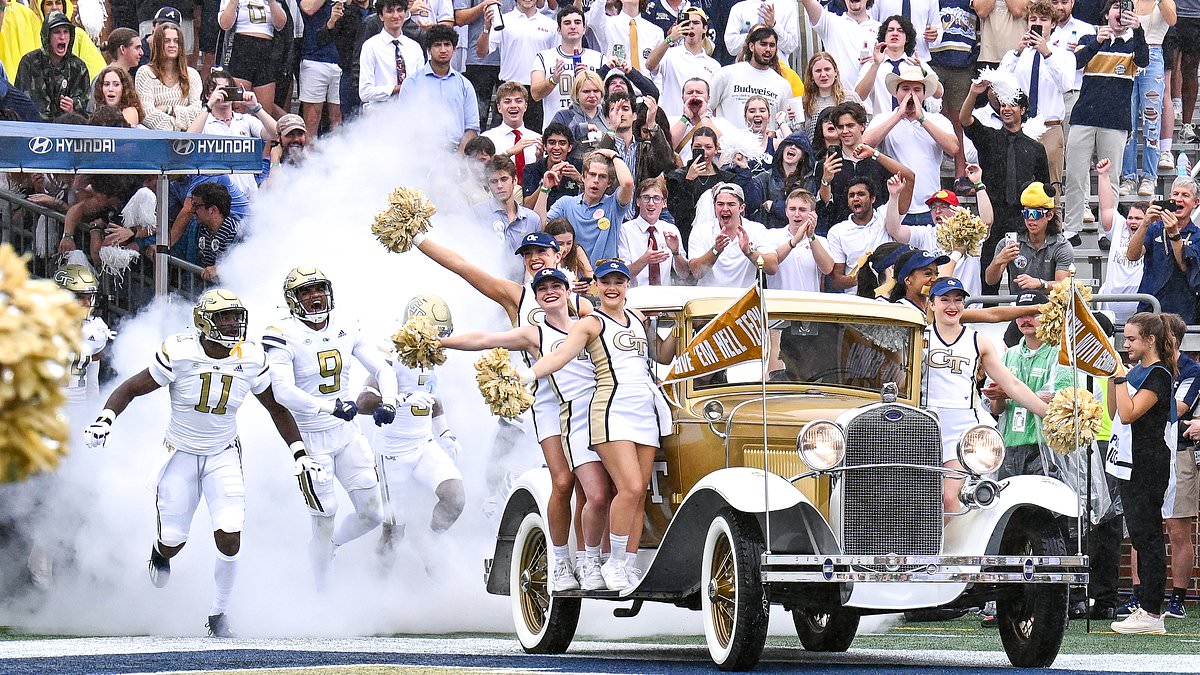Freshmen from the northeast are flocking to southern colleges because they’re cheaper, friendlier and are not being torn apart by progressive politics.
According to the Wall Street Journal, the number of Northerners attending Southern public schools has ballooned to 84 percent over the past two decades. Between 2018 and 2022, the figure surged 30 percent.
Students are drawn South, in part, because the public universities offer cheaper alternatives to Northern schools.
But the exodus is also being driven by teenagers who wish to avoid the intense political polarization plaguing Ivy League campuses in New England and New York.
To these prospective students, the sense of community represented by the South’s football Saturdays is especially enticing.
Throughout American history, ambitious high-school seniors have tended to set their sights on Ivy League schools.
Although their private Southern counterparts like Duke and Vanderbilt have always attracted Northern scholars, the recent trend of students going South has seen many opt for public universities.
Since 2002, interest in popular Southern Institutions like Clemson and Georgia Institute of Technology has outstripped interest in Ivy League schools, according to the Journal.
Over the same time period, applications to Alabama have skyrocketed more than 600 percent. Applications to Harvard – which has been rocked by anti-Semitism claims in the wake of the October 7 attacks and Israel’s bombing of Gaza – have only increased by 200 percent over the same period.
Covid accelerated the trend, with closures and mask mandates dragging on for far longer at Ivy League colleges than their southern counterparts.
Mitch Savalli, a freshman at Georgia Tech from Long Island, told the Wall Street Journal that he was drawn to the school after witnessing his older brother’s difficult experience at a college in Upstate New York.
Mitch’s older brother attended the school during the pandemic. He was subjected to routine lockdowns at the college after he had been exposed to Covid.
There were also mask requirements, social-distancing rules, and online classes that he attended in his dorm room.
During this time, the Savalli brothers watched college football games that showed students across the South cheering on their teams in person.
‘There were more freedoms in the Southern schools and that really started to drive applications,’ Vincent Pisano, an assistant principal in the Long Island district where Savalli attended school, told WSJ.
‘Then the outreach really started to grow from the Southern schools. Schools like LSU and South Carolina started attracting huge groups of kids,’ Pisano said.
In Savalli’s school district, applications to Southern universities have tripled compared with a few years before the pandemic.
This district is not unique, though. Federal Data show that while the number of a students opting for Southern schools was already growing, after the pandemic the growth accelerated.
‘You had students home in their basement in Connecticut looking at their phone seeing most of the Northeast closed down and not much happening,’ Rick Clark, executive director of strategic student access at Georgia Tech, told WSJ.
‘At the same time they are seeing sororities at Alabama and football games in Georgia and Florida. Life is happening,’ he continued.
Cheaper tuition at Southern colleges acts as a further inducement for students from the North.
According to the WSJ, last year, Southern schools listed among the nation’s top 100 public research universities charged substantially less than colleges elsewhere.
‘Southern schools charged students from other states a median $29,000 in tuition and fees, the least of top public colleges in any region,’ the Journal noted.
Mitch Savalli originally hoped to attend Tufts, where out-of-pocket costs amount to roughly $80,000. At Georgia Tech, the financial burden is half of that.
According to college counselors, many teenagers are also drawn South because they want to participate in the area’s heady Greek life.
Across Instagram and TikTok, fraternity and sorority members offer fun glimpses into their world.
Meanwhile, over the past year, Northern schools have tended to feature prominently in news reports about campuses being in the crosshairs of intense protests.
College counselors claim that this crucial juxtaposition in atmospheres is another reason why an increasingly large number of teens are opting to go South for school.
Colby College sociology professor Neil Gross said that students who move South to attend college pay less attention to politics than those who attend schools in the Northeast.
‘Some students are saying, “I don’t want to be in a super political environment,” and they are opting into an atmosphere where they can focus on things other than politics,’ Gross said.
Rachel Rubin, the co-founder of Spark Admissions, a private college-counseling company, told WSJ that bitter student protests over the war in Gaza have prompted some Jewish and Southeast Asian to dismiss elite Northeastern schools.
‘They are being much more careful about which Ivies they are applying to and are expanding their search to the rest of the country.’
Fascinatingly, many parents who come to visit their children at southern colleges end up moving there themselves, a practice known as trailing.
They’re attracted by the good weather, friendly vibes and cheaper property – as well as proximity to their loved ones.
